PVC stands for, Polyvinyl chloride (PVC), which is a thermoplastic polymer. This material finds its use in a very wide variety of applications and products. The material’s durability, ease of assembly, and being cost-effective make businesses used them. Due to its intrinsic properties, PVC is widely used to make promotional products such as table mats, coasters, and keychains. Being in an in-demand material, manufacturing PVC has to follow a meticulous process.
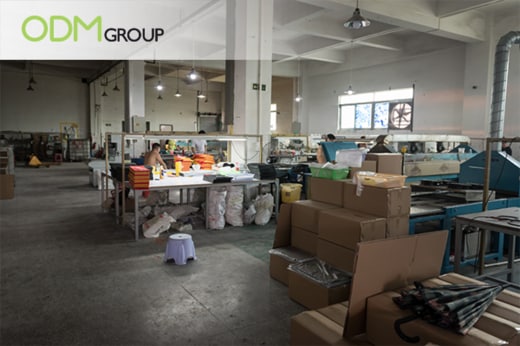
Manufacturing PVC Table Mats Factory Layout
The ODM team in China has recently visited one of our Dongguan suppliers to find out more about the processes in manufacturing PVC table mats. The factory holds 51-100 workers who strive to ensure top-notch quality of products. In this trip down, we will see the importance of industrial factory tours and quality control services to more readily oversee product creation and client satisfaction. Let’s take a look at the processes.
Stages of Manufacturing PVC
We conducted this factory visit while workers were doing the actual process of manufacturing PVC table mats. Listed below is the step-by-step guide in creating PVC promotional items.
Step 1: Open Moulding
The very first step to this process is Open Mould. This process incorporates spray-up (chopping) and hand lay-up moulding methods. A single-sided mold is used to act as the form and cosmetic surface of the part. Followed up by a gel coat applied to the prepared mould.
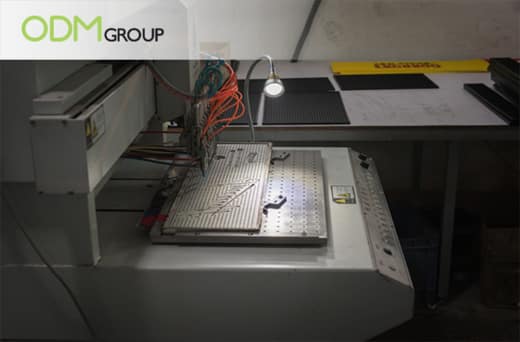
Manufacturing PVC
Afterwards, workers will then apply reinforcements by hand and wet-out with catalyzed resin. Extra layers of overlay are added to construct thickness and desired quality. The Curing process is the last step in open moulding where the air is rolled out of the laminate by hand and left to harden.
Step 2: Mixing the correct colour liquid PVC
The next stage will be colour matching. Colour matching is an extremely important component in a company’s branding. One of the elements that make up the character of a business and most of the promotional efforts ordinarily grounded on it.
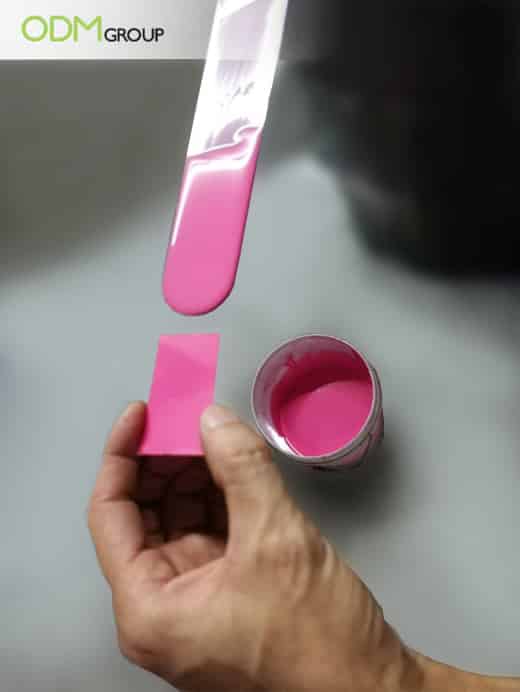
Manufacturing PVC Mats – Colour Matching
The Pantone Matching System (PMS) is a standardized color matching system run by Pantone Inc. This dominant guide helps to match the client’s chosen colour schemes. Furthermore, there is a Minimum Order Quantity (MOQ) in manufacturing PVC colours. If the colours are already available in the factory, the MOQ is two thousand. However, if the client’s required colours are out of stock, the factory has to open and set up the dying colours. With this, the MOQ would be around 10k.
Step 3: Injecting the liquid PVC into the mould
Liquid Injection Moulding (LIM) is the third step in manufacturing PVC. It is a modern technique that molds stock materials into a scope of segments and products. The difference between LIM and the standard injection molding process will be LIM’s focus on liquid silicone rubber and comparative elastomeric materials. The Automatic filling liquid machine is capable of efficiently producing a large number of items of not too intricate details.
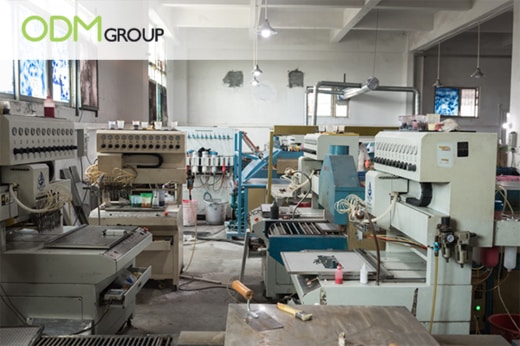
Manufacturing PVC- Automatic Liquid Filling Machine
The liquid moulding process is a very precise and distinct method. In this process, workers can already put the company design or logo onto the product mould.
Step 4: Baking
The fourth step will be Baking. After injection moulding of the colored liquid PVC, they will be placed in a PVC baking moulding machine. The machine uses pressure casting to remove any air bubbles from the moulds and hardens it. This hardening process will be done by the machine and not in other ways.
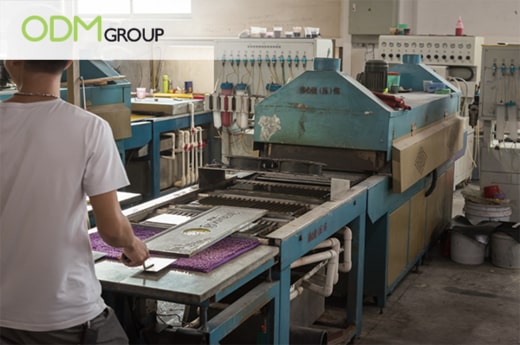
Manufacturing PVC- Baking Machine
Step 5: Take-Off
The last and final stage of manufacturing PVC table mats will be Take-Off. After the baking process, when the mould hardens, they will be removed. Separating the product from the moulds depends on the shape and size of the product. In some cases, they can be removed by lifting and tapping it out.
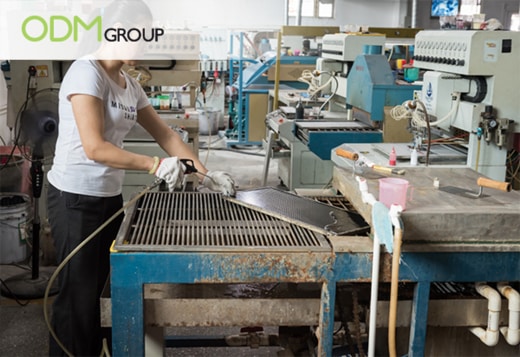
Manufacturing PVC – Air Pressure Gun Removal
Other cases, such as manufacturing PVC table mats, workers use an air pressure gun to take out the finished product. The jet of air released between the edge of the mould and product helps free the rigid areas that cannot be flexed. Lastly, workers will clean off any dirt or dust on the products with a brush and package them for shipment.
With that, we have completed the factory tour of manufacturing PVC table mats! Conducting site visits becomes a work routine for ODM. It is important not only to build up a rapport with your suppliers but to clear up any misconceptions before shipping the products out. You can check out the video below for a virtual tour of the processes!
How Can ODM Help?
ODM group does not only specializes in custom promotional product ideas and manufacturing of high-quality products. We are also a pioneer in manufacturing first-rate POS display units and product packaging designs. Moreover, we conduct site and factory visits to ensure that all the products that come from our company are excellently made.
If you’re looking to market a product or require help in producing high-quality products, be sure to contact ODM for our expertise!
Related China Factory Blogs:
Wondering why factory and site visit is important in the manufacturing industry? Check out this blog to find out why.
Other than PVC, there are other factory visits that focus on producing products with other materials. Learn more about polyresin figurines and snow globes here:
Read more about this factory visit of watches and the different components to it:
If you are not interested in watches, fret not as we have blogs on factory visits for manufacturing sunglasses:
This blog will be a factory visit in Dongguan, China as well, but for plush toys production:
Frequently Asked Questions (FAQs)
What's the difference between Open Mould and Closed Mould?
An open mould has an opening at the top; an open container with a flat top. Whereas a closed mold has a cavity that is entirely closed by the mould with only a gatting system that leads from the mould to the outside cavity.
What are elastomeric materials?
An elastomeric material is any material exhibiting elastic or rubber-like properties. They are measured by elements such as material type, compound, and strength, etc.
What are some of the moulding considerations?
Preventing leaks: liquid moulding compounds can seep through gaps in the machine and impede operations. Thus, seals and sealant material are important elements in a moulding device, especially for moving or rotating parts. Inorganic fillers: Cause equipment to deteriorate at a faster rate. Thus, corrosion resistance treatments or increased maintenance are required to compensate for wear.